A few weeks ago, my husband Will told me that he thought he’d seen a rotten egg in the chicken run, but didn’t know how long it had been there. It was black, and big, but looked like one of the chickens had broken it a while ago.
When I went outside to inspect and clean it up with the kitty litter scoop, I discovered that it was, in fact, a giant black chicken dropping.
Smelly. Hard. And looking like our chicken had been constipated for days.
I opened the coop to see if I could find any more waste bombs in there (because as a chicken-keeper, inspecting droppings happens to be part of the job—lucky us!), and sitting inside her egg box was Iman, our Golden-Laced Cochin.
Her body was sprawled across the entire nest, nearly flattened, and she looked at me with defiance.
It had been a few hours since Will had gone down there and reported her sitting in the nest. She hadn’t laid an egg all week, which led me to believe that our gal had just turned broody again.
Is your chicken acting the same? Here’s what you can do about it.
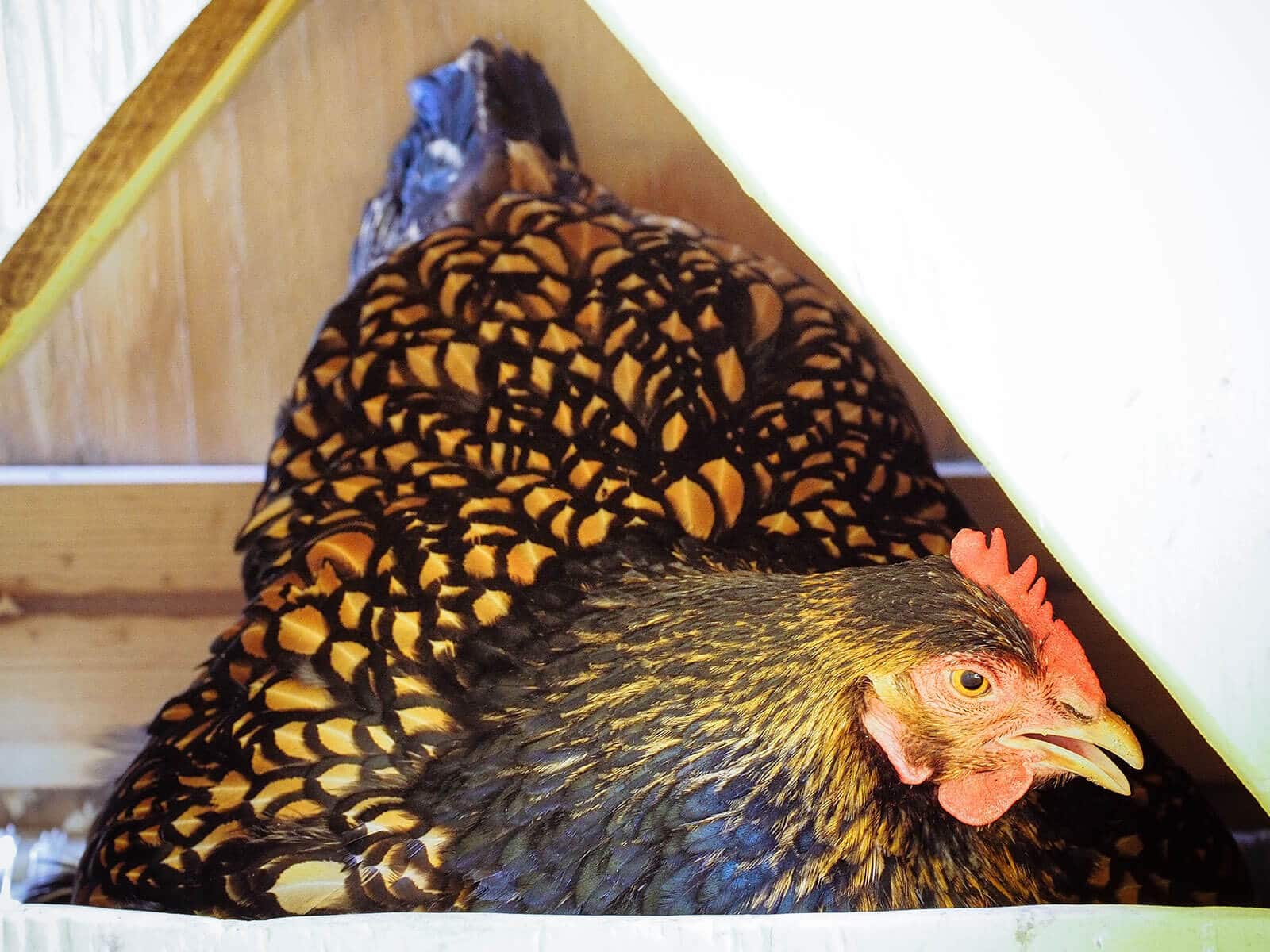
What does it mean when a chicken is broody?
Broodiness is a natural chicken instinct that happens to some chickens every year, and others not at all. It switches on as soon as they’re old enough to lay, between five and eight months old.
Their hormones kick in overtime, much as women’s do when they’re pregnant, and they focus all of their energy into hatching eggs.
The telltale symptom of a broody hen is a sudden display of motherly instinct: sitting on a nest to keep the eggs warm for several hours a day, putting the babies’ needs in front of hers and making sure the eggs are well protected.
This is all fine and dandy if your chicken does have eggs to hatch, but sometimes, a chicken will sit on unfertilized eggs or even imaginary eggs.
Hens raised without roosters can’t lay fertile eggs, but they can still go broody and attempt to sit on a clutch of eggs.
Warm weather and a hormonal imbalance, caused by no doing of the flock owner, will spur a hen to turn broody for weeks on end, waiting for non-existent chicks to hatch.
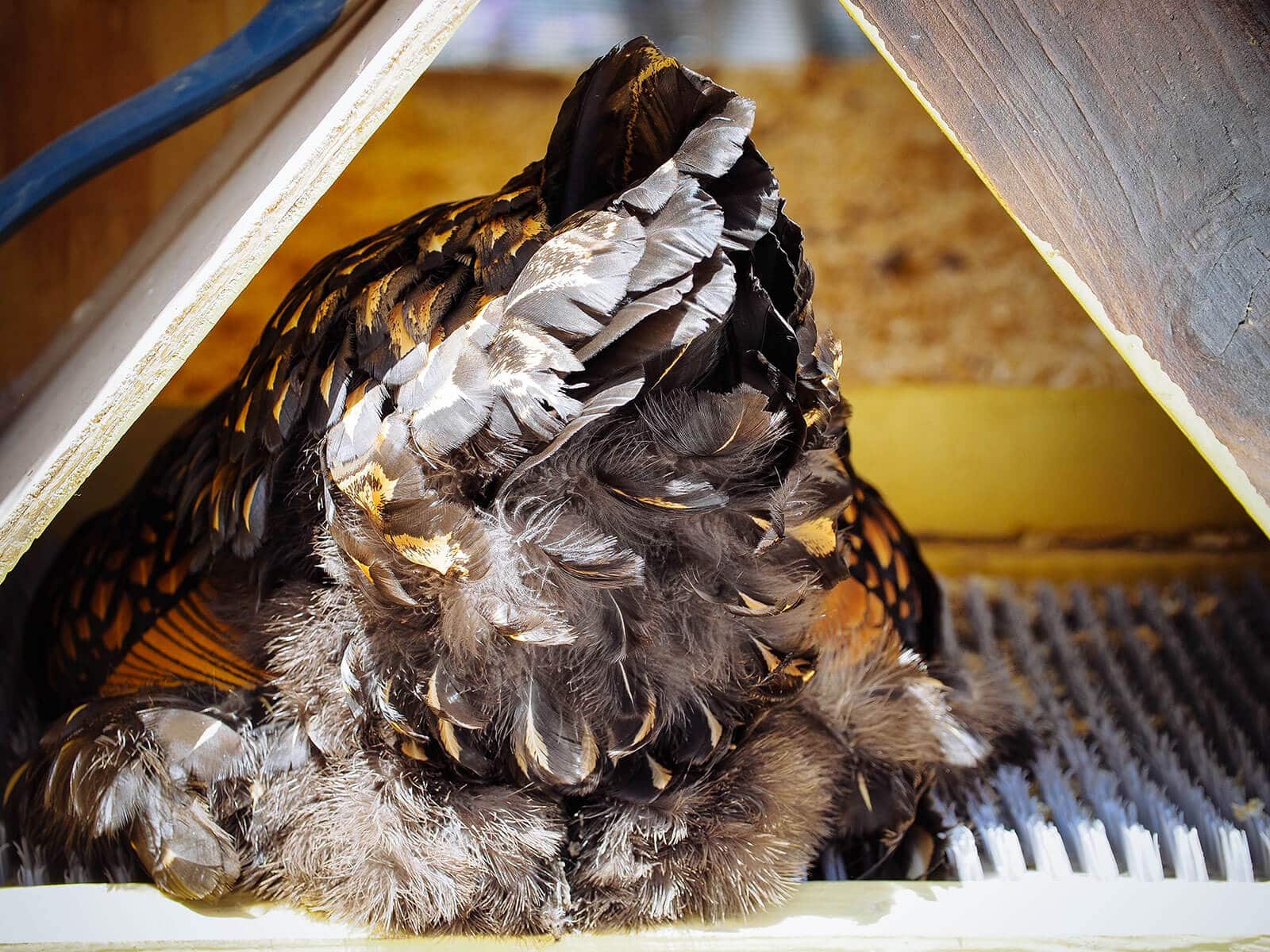
The 6 most broody chicken breeds
Certain breeds of chickens are more broody than others. This is actually good to know if you want to hatch your own eggs every year, but it’s also useful for predicting which hens in your flock may be out of commission each summer.
1. Cochins
Cochins have a strong tendency to turn broody every year during their prime egg-laying years. They are big, fluffy, and sweet, and since they don’t lay as prolifically as other breeds, Cochins make great mothers and pets.
2. Silkies
This petite breed is incredibly docile, almost like the chicken version of a lap dog. They’re probably tied with Cochins for being the broodiest chicken breed, so expect them to take a break from laying when this happens.
3. Buff Orpingtons
Another sweet, lovable bird with a docile personality, Buff Orpingtons have that natural motherly instinct so they’re prone to going broody. Since they also happen to be very productive layers, this is something to watch for in peak season if you depend on a steady supply of eggs.
4. Buff Rocks
The Plymouth Rock breed is one of the most docile breeds (do you see a trend happening here?) and known for following its keepers around. I used to have a Barred Rock that would always try to jump in my lap! But this cuddly tendency is what also makes them more likely to go broody (the Buff Rock hen, in particular).
5. Brahmas
Brahmas are hefty, fluffy chickens with feathered feet. They tend to go broody in early summer, especially if there’s another hen in the flock that goes broody. Brahmas are a great choice if you want a devoted sitter, but because of their size, be sure to watch them after the eggs hatch so they don’t accidentally trample their chicks.
6. Sussex
The Sussex is one of the oldest chicken breeds, and a very friendly and reliable layer. These chickens go broody every year (sometimes quite early) and also make great mothers, so if this is what you want, you can count on them to hatch a clutch of eggs.
The least broody chicken breeds
From personal experience, I’ve raised three different generations of Easter Eggers and none of them have ever gone broody. This is a very active and curious breed, and my Easter Eggers have always been more interested in exploring and foraging than sitting on a nest.
That said, there are other breeds known for either not being broody in general, or just not being very reliable sitters. They may start out broody but abandon their nest soon after, so it doesn’t take much to break these hens from their broodiness.
Non-broody breeds also tend to have a few common characteristics: lightweight, somewhat flighty or skittish, and Mediterranean, Continental, or otherwise non-American classifications. Hybrid layers bred for production (such as black sexlinks and red sexlinks) also rarely go broody.
- Crevecoeur
- Hamburg
- Lakenvelder
- Minorca
- Polish
- Rosecomb
- Sebright
- Sexlink
- Sicilian Buttercup
What are the risks of a hen staying broody?
Even when there are no eggs to sit on, the hen doesn’t realize it. She’ll simply sit and sit, refusing food and water, barely moving from her nest.
Left unattended, a hen will stay broody for around 21 days, which is the time it takes to hatch a clutch of fertile eggs. After 21 days the behavior should stop, but sometimes, a hen will remain broody and it’s important to “break,” or stop a broody hen before she harms herself.
Broodiness is more of a problem for chickens that don’t have fertile eggs to hatch, because a stubborn chicken could make herself malnourished.
It’s unlikely that a broody chicken will starve to death or die in the nest (after all, it’s part of her mama instinct: she won’t do her chicks-to-be any good if she starves herself to death). But she won’t be drinking and eating as much as she normally would, and she’ll lose more weight than she should.
She’ll stop laying eggs the entire time she’s broody. She’ll pull out her own chest feathers in order to produce more body heat for her eggs.
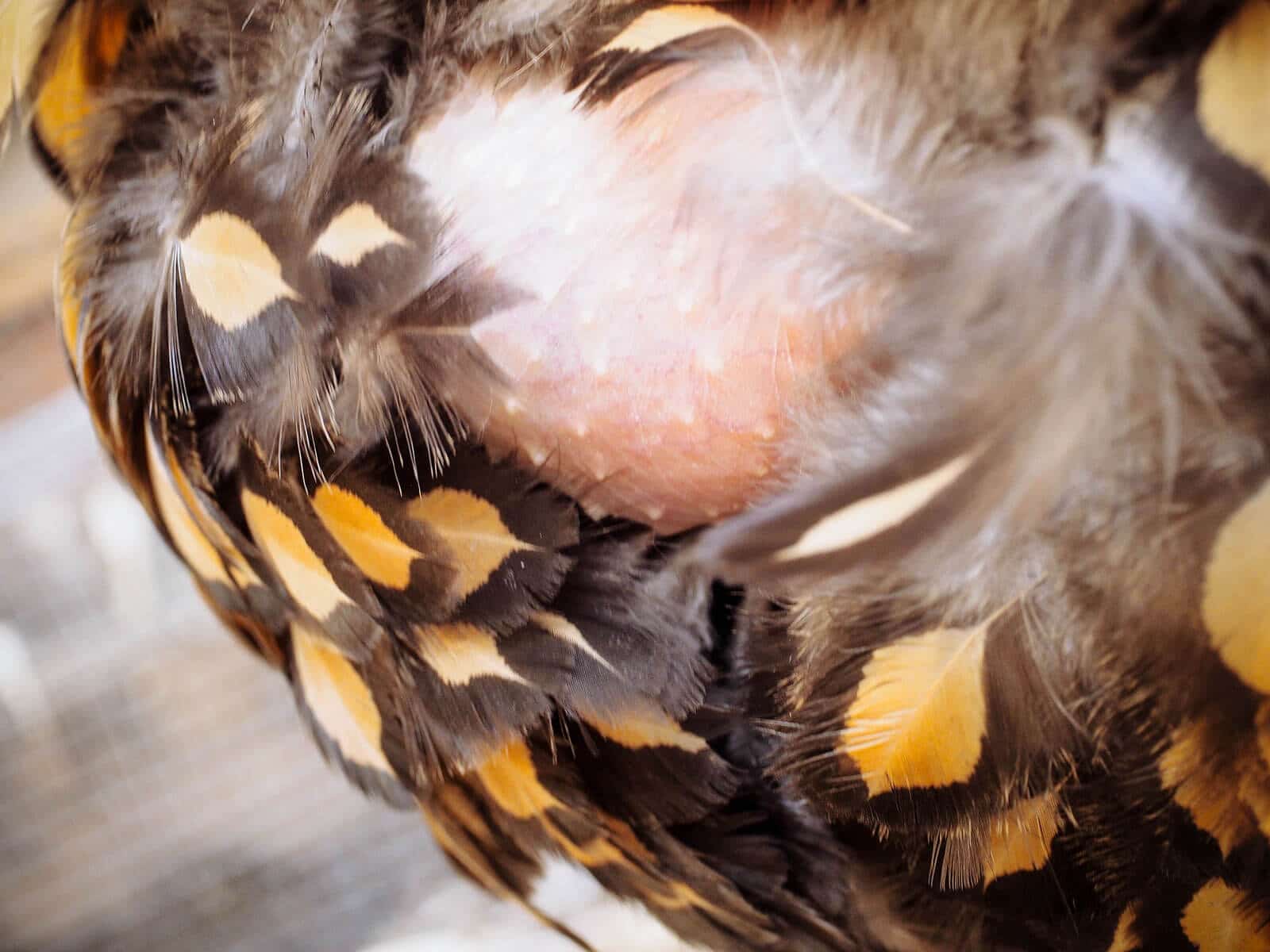
She’ll leave the nest only a couple of times a day to relieve herself, which often results in those big, stinky poops because she’s been holding them in all day.
She’ll also hog the egg box the whole time, leaving little to no room for other chickens to lay eggs. If they come near her, she might peck at them or screech at them.
It’s fascinating how a usually sweet, docile hen will suddenly turn Cruella once her hormones start surging! I call this period of her life “Chicken PMS.”


When broodiness goes on for an excessive amount of time, it makes the hen more susceptible to respiratory infections and other diseases because she’ll be too weak to deal with any illness she’s exposed to.
Broody hens are also at risk for getting mites and lice, because they stay in the nest all day where these infestations are common. They aren’t dust bathing and they aren’t outside scratching and pecking, away from bedding material where parasites like to hide.
This is when an easily preventable or treatable problem like mites and lice can turn fatal, as a broody hen will just sit and suffer in her nest.
If your hen turns broody in the height of summer, a poorly designed or poorly ventilated chicken coop could cause the egg box to heat up too much, putting your hen at risk of heat exhaustion.
So you see, there are several reasons to break a broody hen before it’s too late, and there are several ways to snap her out of her mood.
I’ve personally gone through all of these methods and if you need a humane solution, start with the first method and continue going down the list until you successfully break your broody hen.
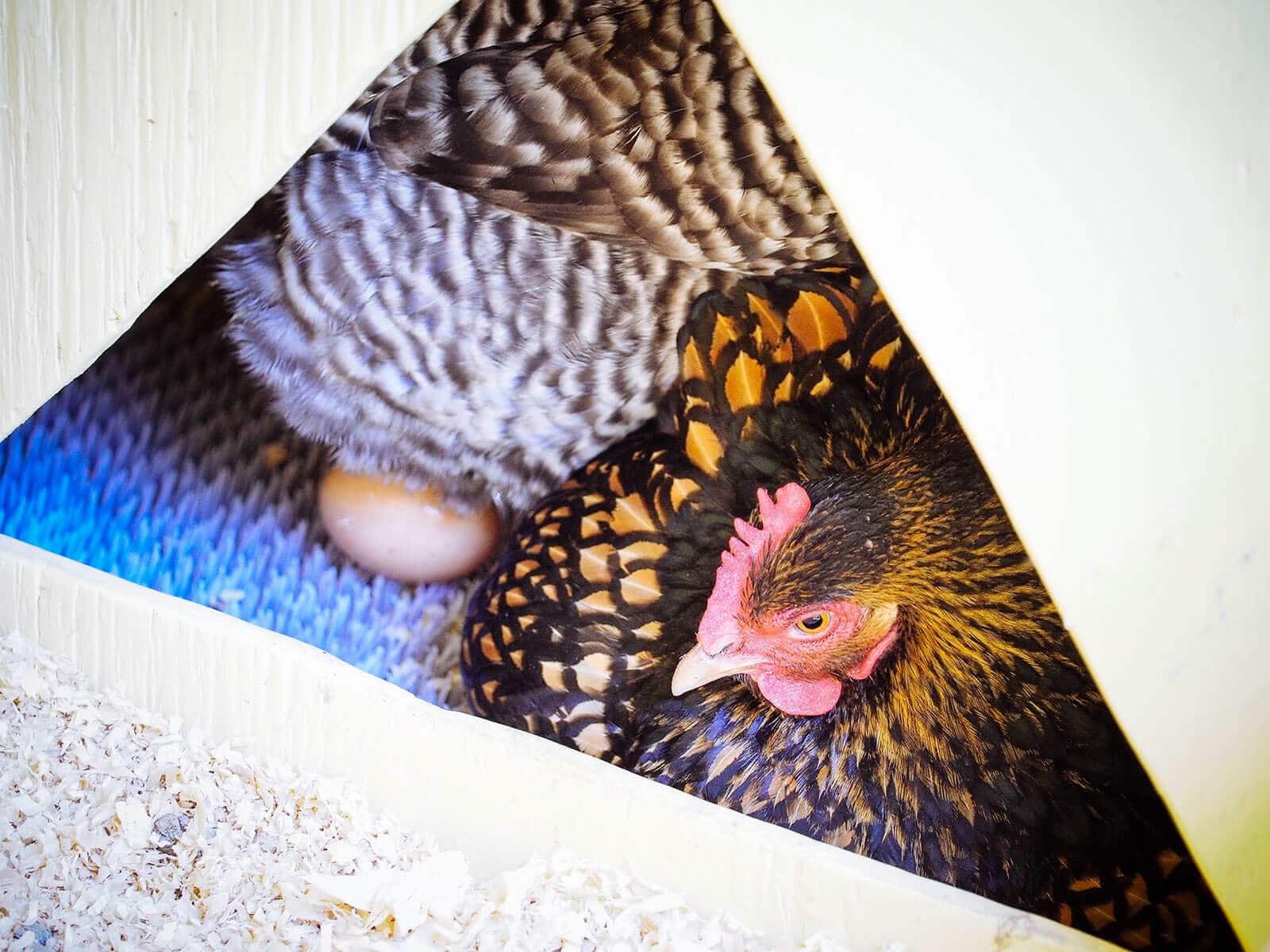
5 easy ways to break a broody hen
Method #1: Remove your broody hen from the nest. Repeatedly.
The easiest one to try first is to gently pry your chicken from her nest and put her outside with the rest of her flock.
She’ll ruffle her feathers, spread her wings, keep her body low, grumble at you, even peck at you — anything to protect her nest from the perceived threat against her real or imaginary eggs.
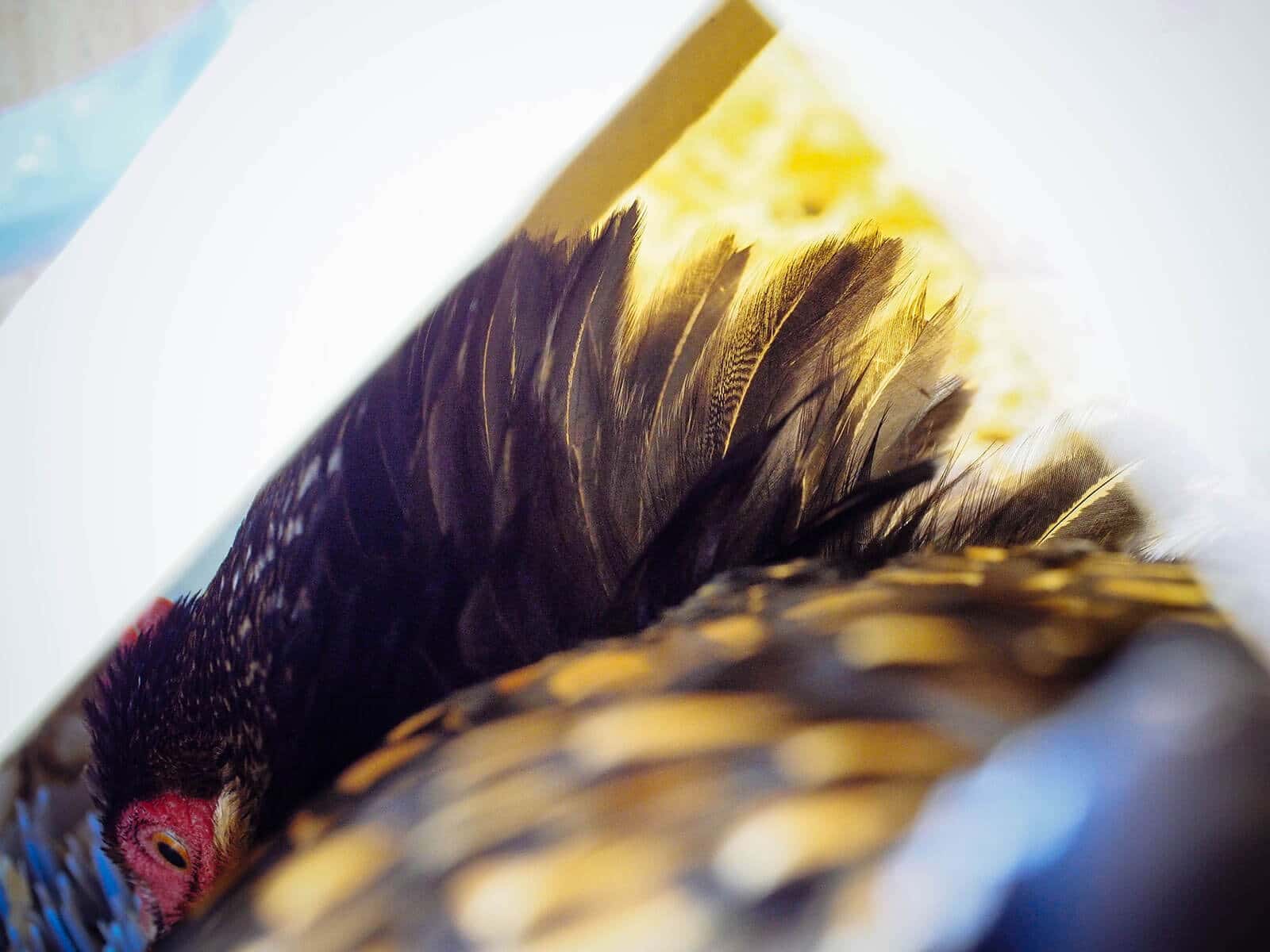
If there are eggs in the nest, collect them right away so she can’t continue sitting on them. Try to collect every egg as soon as it’s laid to remove any temptation for the broody to sit.
I like to carry my chicken around for 10 or 15 minutes while I make my rounds in the garden to “air her out,” so to speak. I throw out some treats, set her down on the ground, and encourage her to scratch and peck in the yard.
I add a few logs, branches, or upside-down buckets as interesting new places to roost, put a head of cabbage out for entertainment, or just dump a bowl of kitchen scraps for the flock to fling about. (I keep a large bowl in the kitchen as my countertop compost, and empty it every day in the chicken run.)
A disgruntled chicken may hop back into the egg box once you put her down, so if she does, simply remove her from the nest and carry her around again. You want to distract her as much as possible with “shiny new objects,” so to speak.
Method #2: Give your broody hen a distraction.
Speaking of shiny new objects, I’ve found that even the most stubborn broodies (like my Wyandotte this summer, who actually forced her way into the coop when we tried to block it) will get off the nest if there are new flock members around.
I recently started to integrate our new chickens with the existing flock and as soon as the pullets were let out of their temporary coop, my broody Wyandotte hopped off her nest to see what the fuss was about. She then spent the rest of the day (and following days) trying to establish pecking order.
So, if you happen to be introducing new chickens, early to mid summer (when most chickens go broody) is an ideal time to do it.
Method #3: Give your broody hen a (gentle!) cold water bath.
If your broody lady is still determined to nest, try my next trick: the cold water bath.
Fill a sink or wash tub with a few inches of cold water and gently lower the chicken into the bath. (Please use common sense if you live someplace with freezing cold tap water, like I do in Oregon, and turn the faucet to refreshingly cool water instead.)

You only need enough water to cover her chest when she sits. (Poor thing, she’s totally bare there!)
The theory here is that you’re helping cool down her chest and her vent, thereby lowering her broody body temperature.
Just as I do when I give a chicken spa bath, I place a towel over my chicken’s head to keep her calm and leave her in the cold (or cool) water for a few minutes.
During this time, I’ll clean her vent and pull off any dried poop stuck to her feathers; there’s usually quite a bit of it, as she’s not pooping regularly.
Then she’s quickly toweled off but not blow-dried, as I want her to walk around the yard, occupying herself with preening and air drying her feathers.
Please, only give your chicken a cold water bath when it’s warm and sunny outside!
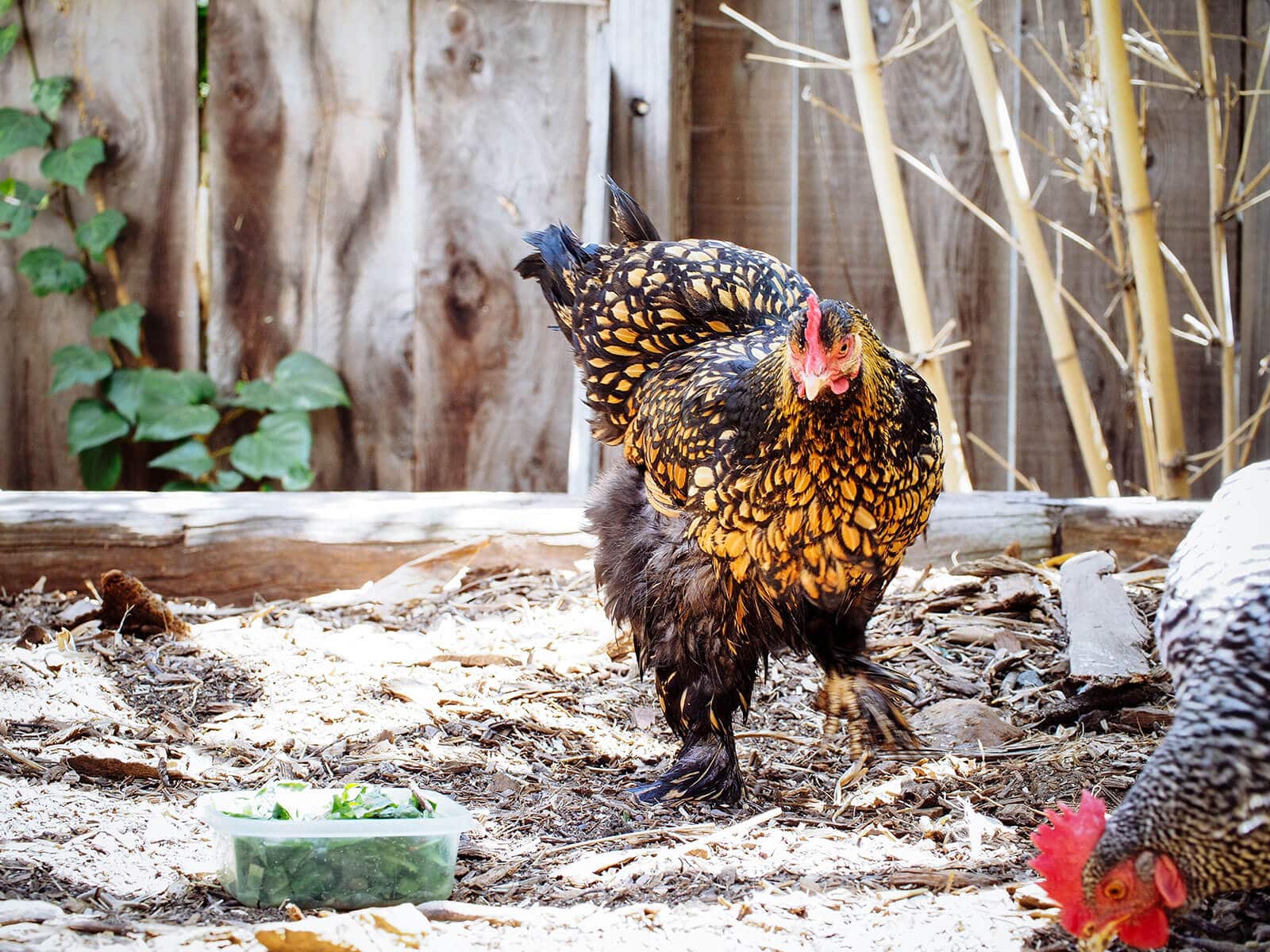
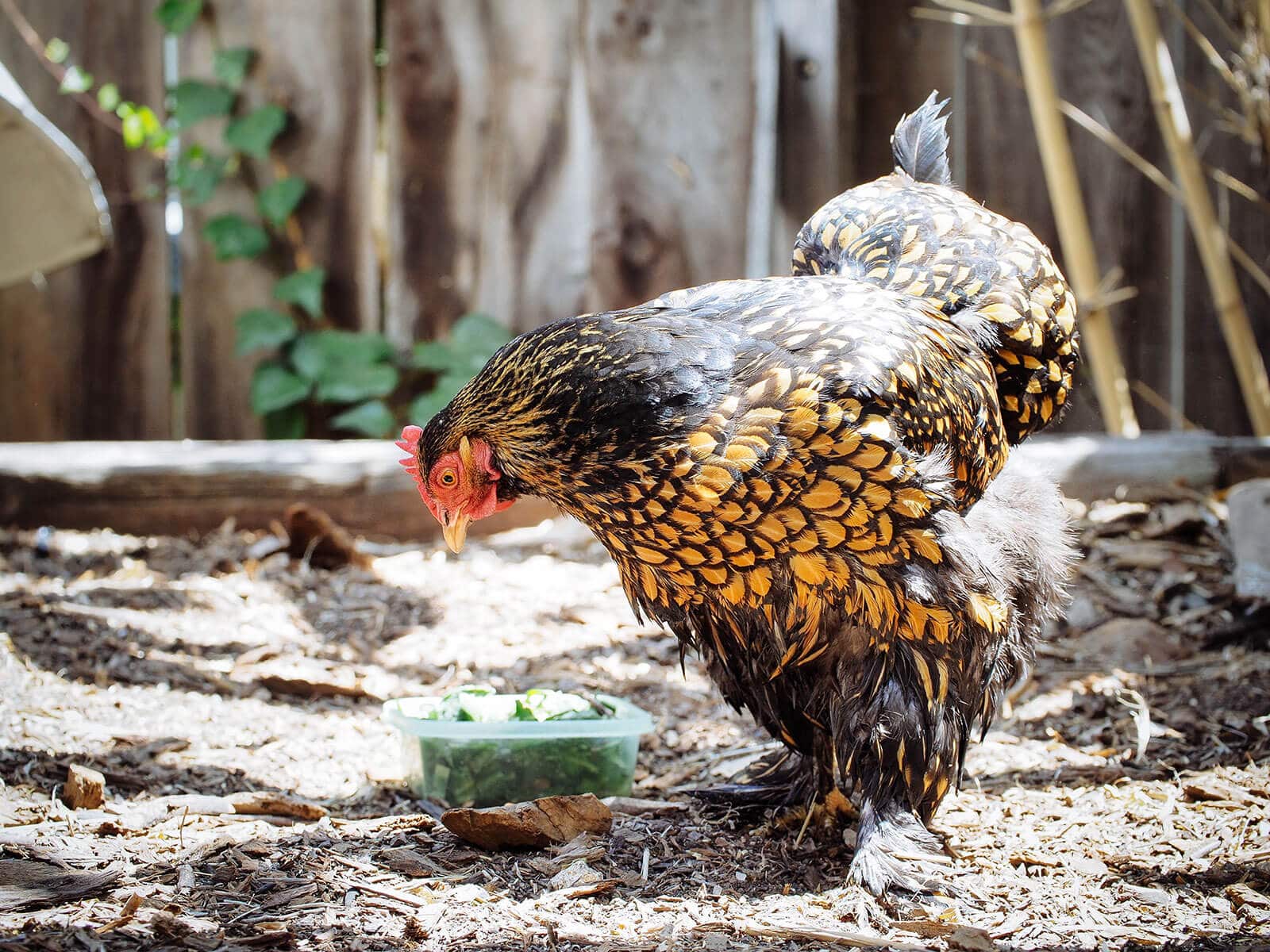

Method #4: Lock your broody hen out of the coop.
For good measure after doing Methods #1 or #2 above, I also lock my broody out of the coop; I do this when I know my other chickens have already laid an egg for the day.
Miss Broody will usually pace outside the door, crying, demanding to be let back in to nest. Or, she’ll find herself a comfortable makeshift nest on the grass, in the mulch, or in a shallow pit of dirt, and sit there for the rest of the day, ignoring her flockmates.
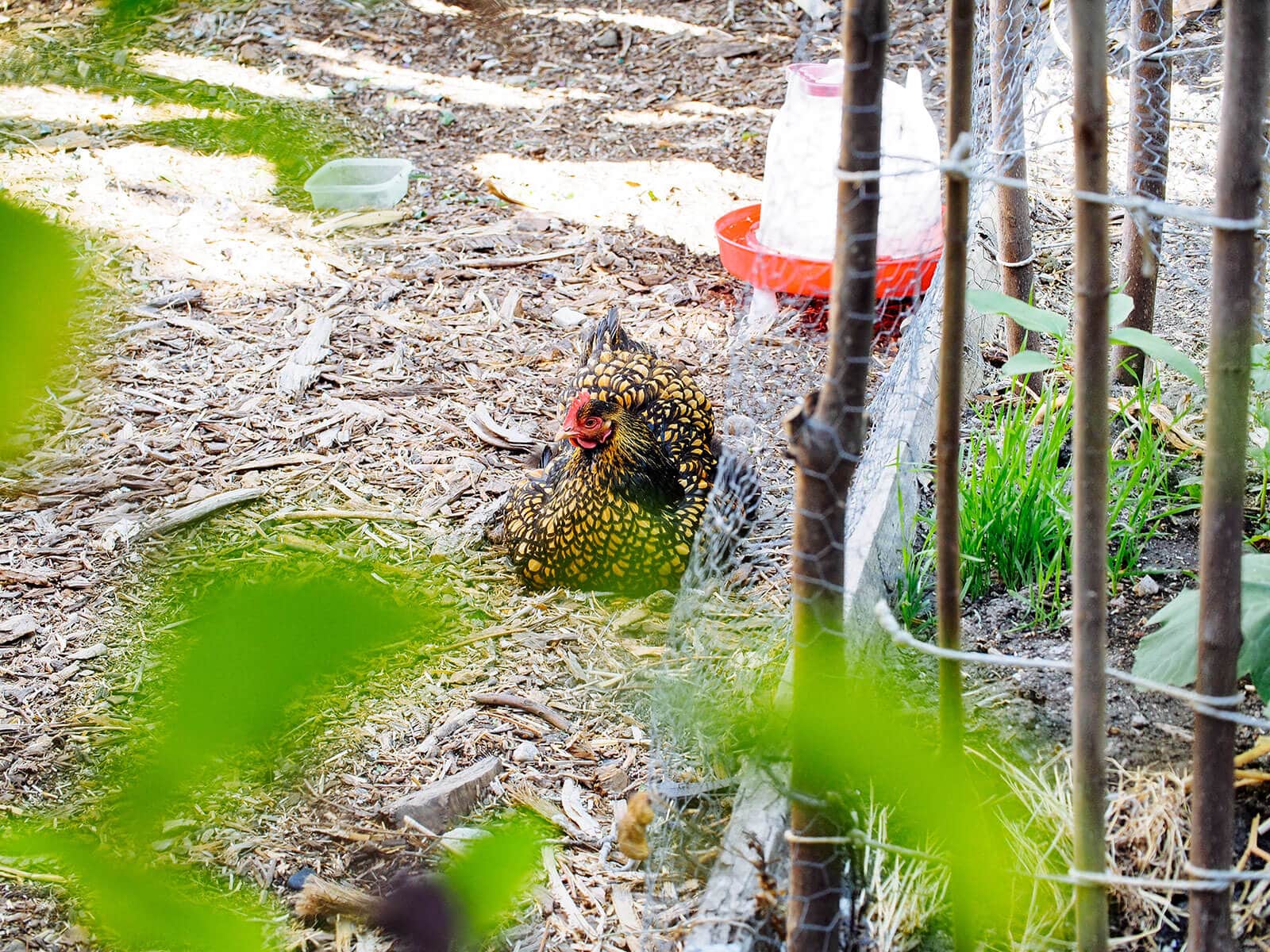
Whenever possible, I’ll lure her with treats from the garden so she has to get up and move about.
Before sunset, I unlock the coop so the flock can tuck themselves in for the night. The broody hen may make a beeline for the egg box. If this happens, transfer her onto the roost. By that time, it’ll usually be dark enough that she won’t be able to make her way back to the box.
The next morning, you might find her wandering around with her flock… or you might find her nesting again.
Repeat the cold water bath, lock her out of the coop, and manually place her on the roost again that night.
If your chicken runs out to greet you in the morning and goes about her daily scratching and pecking, she might be back to her normal self. But keep an eye on her throughout the day, as I actually did find my chicken back in the egg box that afternoon.
Method #5: Chicken jail.
Do you know what happens to a naughty chicken that stays broody?
Yup. Chicken jail.
Or as I like to call it, Casa de Gallinas (the farm version of casa de perros, which I’m sure every spouse has found himself in at some point).

A chicken jail can be a wire dog kennel, a rabbit hutch, or an enclosed pen (which some flock owners keep as “hospital pens” for quarantining sick hens or isolation pens for introducing new flock members).
In my case, I used a medium-sized dog kennel. It came with a separate wire panel that could be attached inside to divide the space for puppy training. It also had a plastic mat underfoot, which I removed.
The goal of chicken jail is to make your broody as bored and uncomfortable as possible—no nesting areas, no warm dark cozy corner to hide in.
Ideally, the kennel should be elevated on wooden beams, cinder blocks, small crates, or anything that’s safe and stable and will provide plenty of air flow under and around the chicken as she sits.
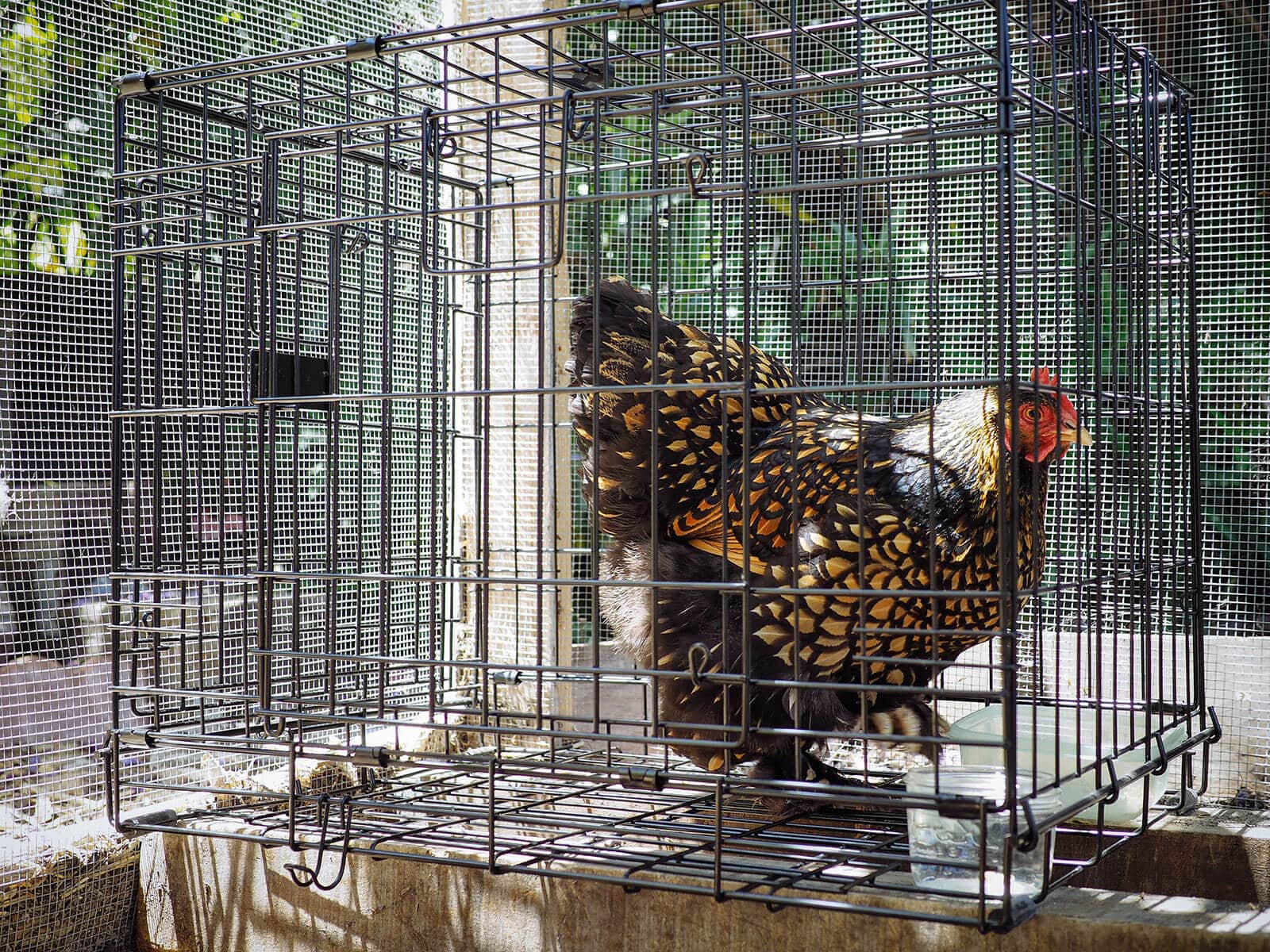
In place of the plastic mat, I laid down the wire panel, which had a smaller grid and offered a little more foot grip. You want your chicken to be uncomfortable, but you don’t want her to hurt herself. A sheet of hardware cloth also works well for flooring.
Place your chicken inside the kennel with plenty of food and water, and leave her in there all day and all night. She does not roost with the rest of the flock, nor does she get her own roost.
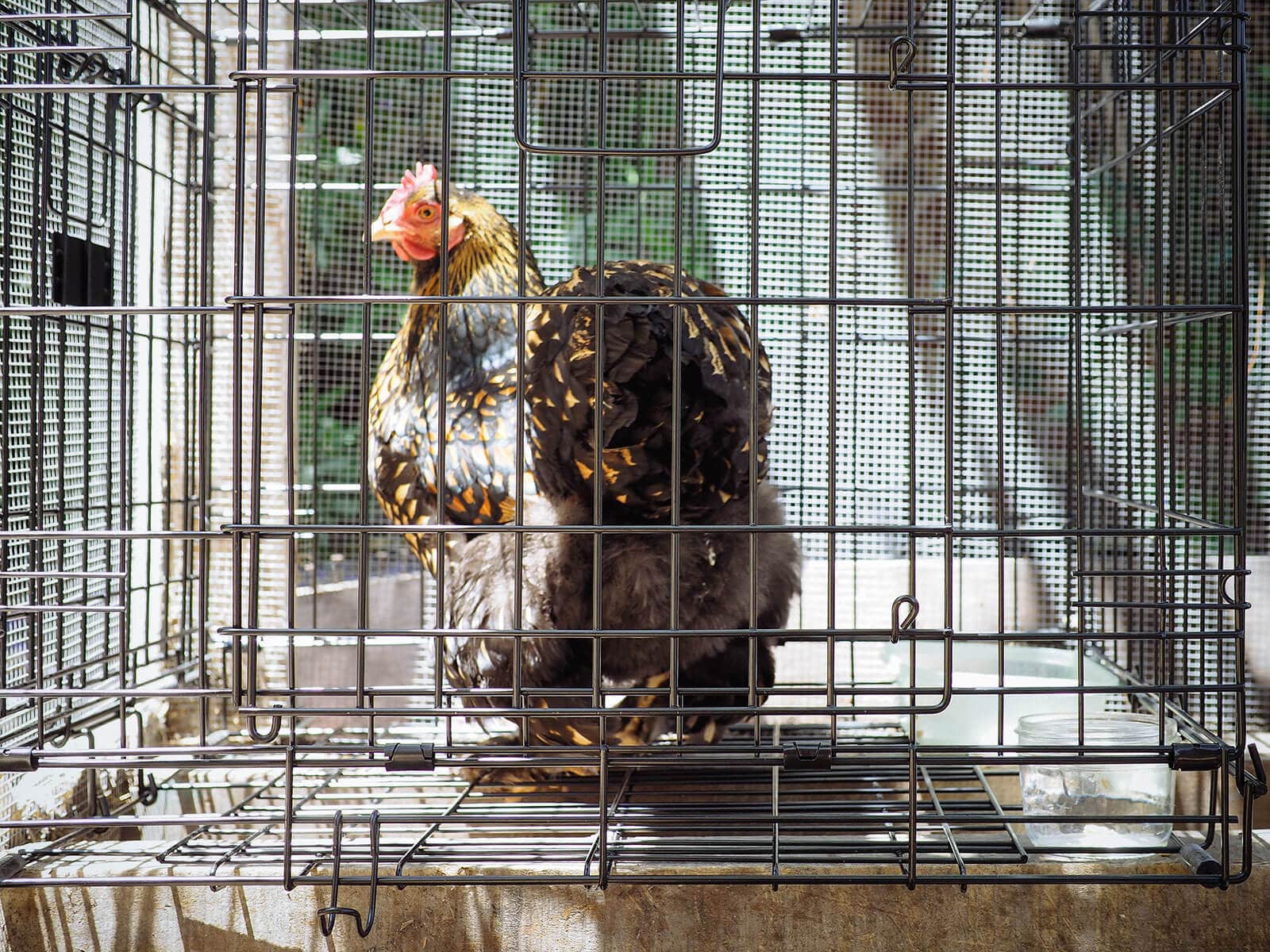
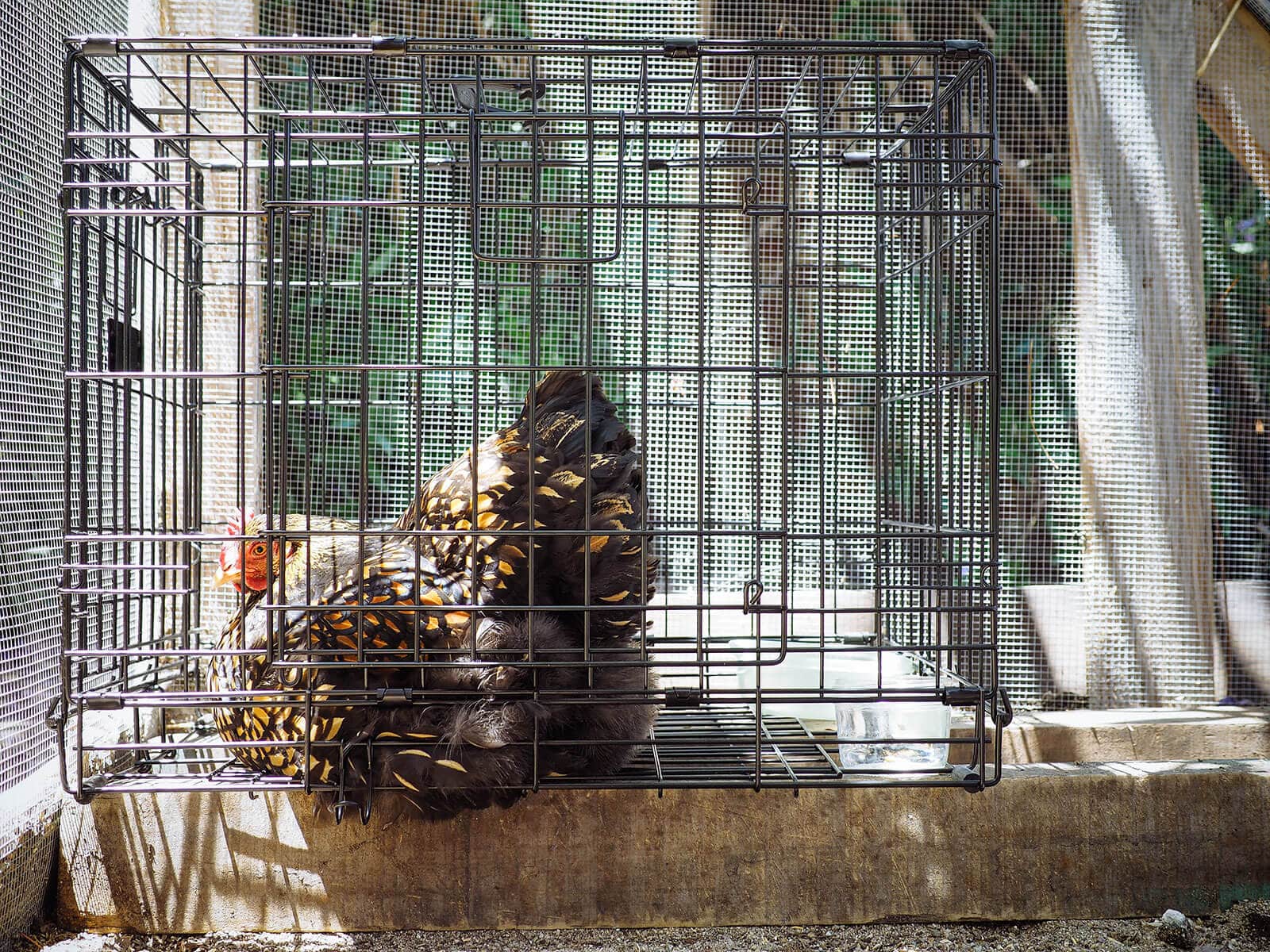
I put the kennel inside our enclosed run, as it gets good dappled light and a soft cool breeze throughout the day (mitigating her desire to nest). It offers protection from predators but still feels social, as my other chickens like to hang around it.
In the morning, let your broody out and observe her behavior. If she runs immediately to the egg box, back into chicken jail she goes. If she starts scratching the ground and interacting with the other chickens, success!
Do keep an eye on her and make sure she doesn’t retreat to her nest again. It took my chicken two-and-a-half days of chicken jail before I was able to break her broodiness. (I’ve read that some particularly stubborn chickens may spend up to six days in confinement before they’re back to their normal selves.)
When I let my chicken out on that third morning, she happily bounded out of the kennel and started dust bathing in the mulch. She ate out of my hand again and ran after every mealworm I threw out.
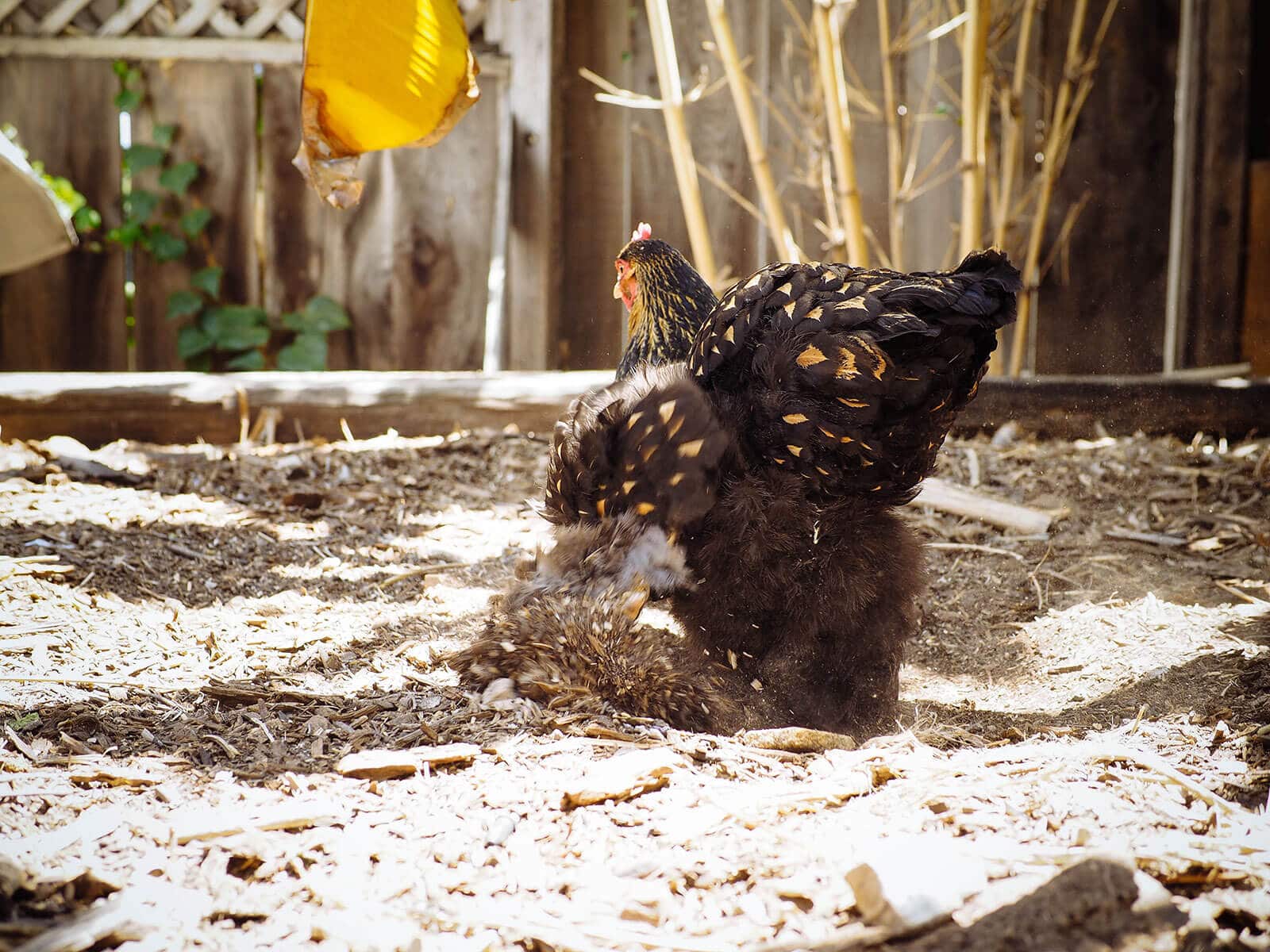
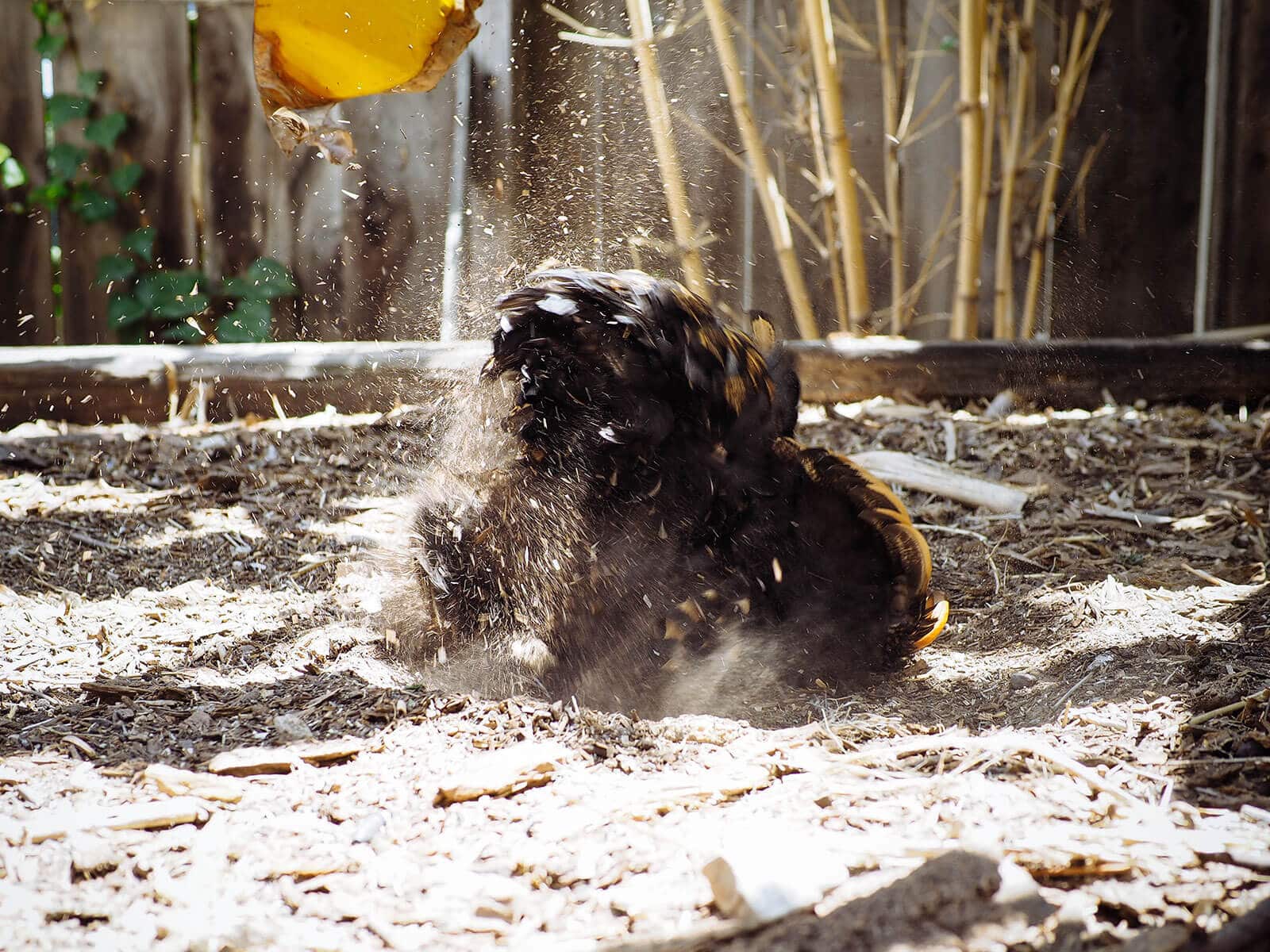
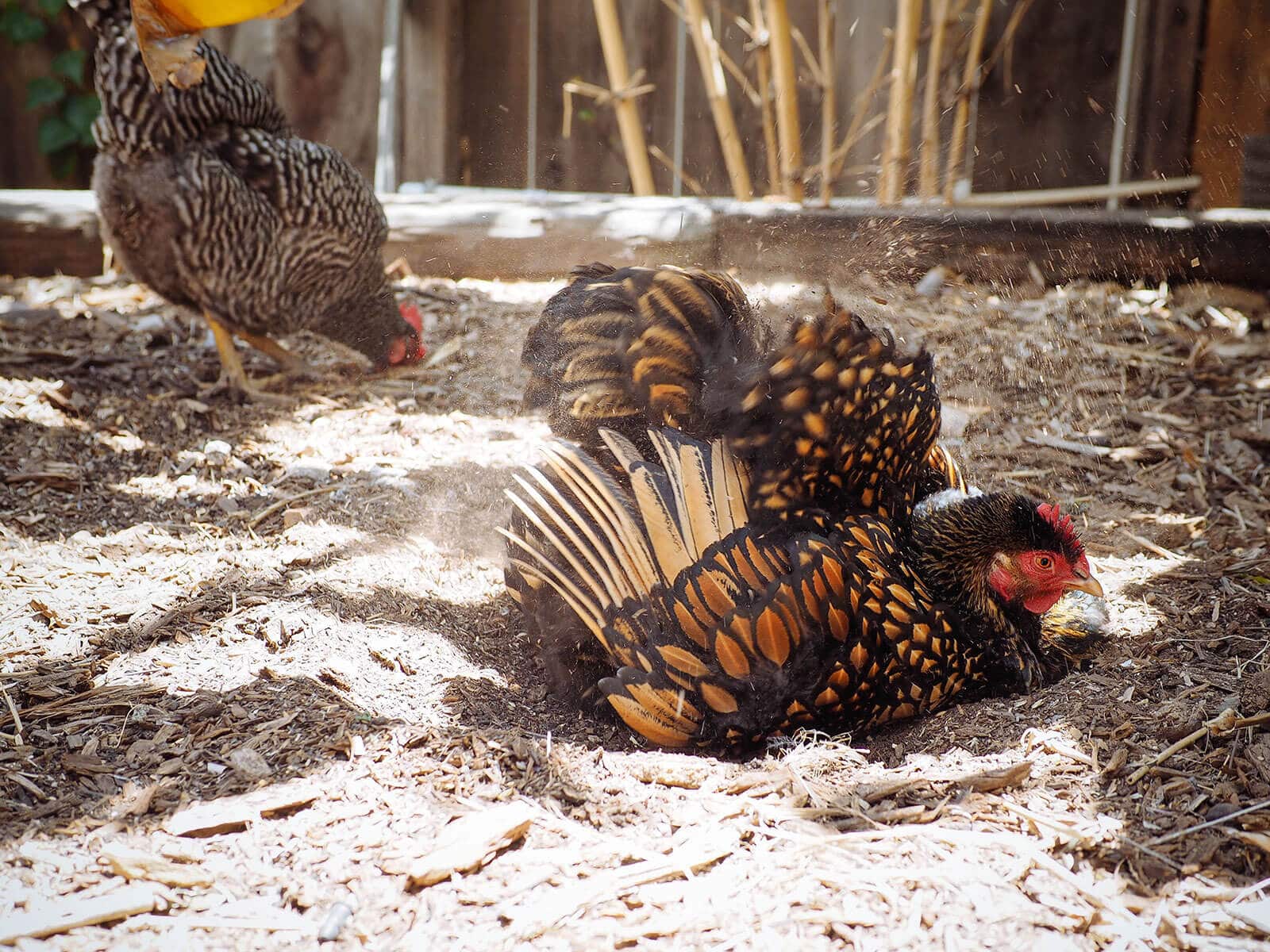
She also started following her flock sisters around, which was when I knew she was “cured”—the flock’s super social, so it was a relief to see them scratching and flapping around together.

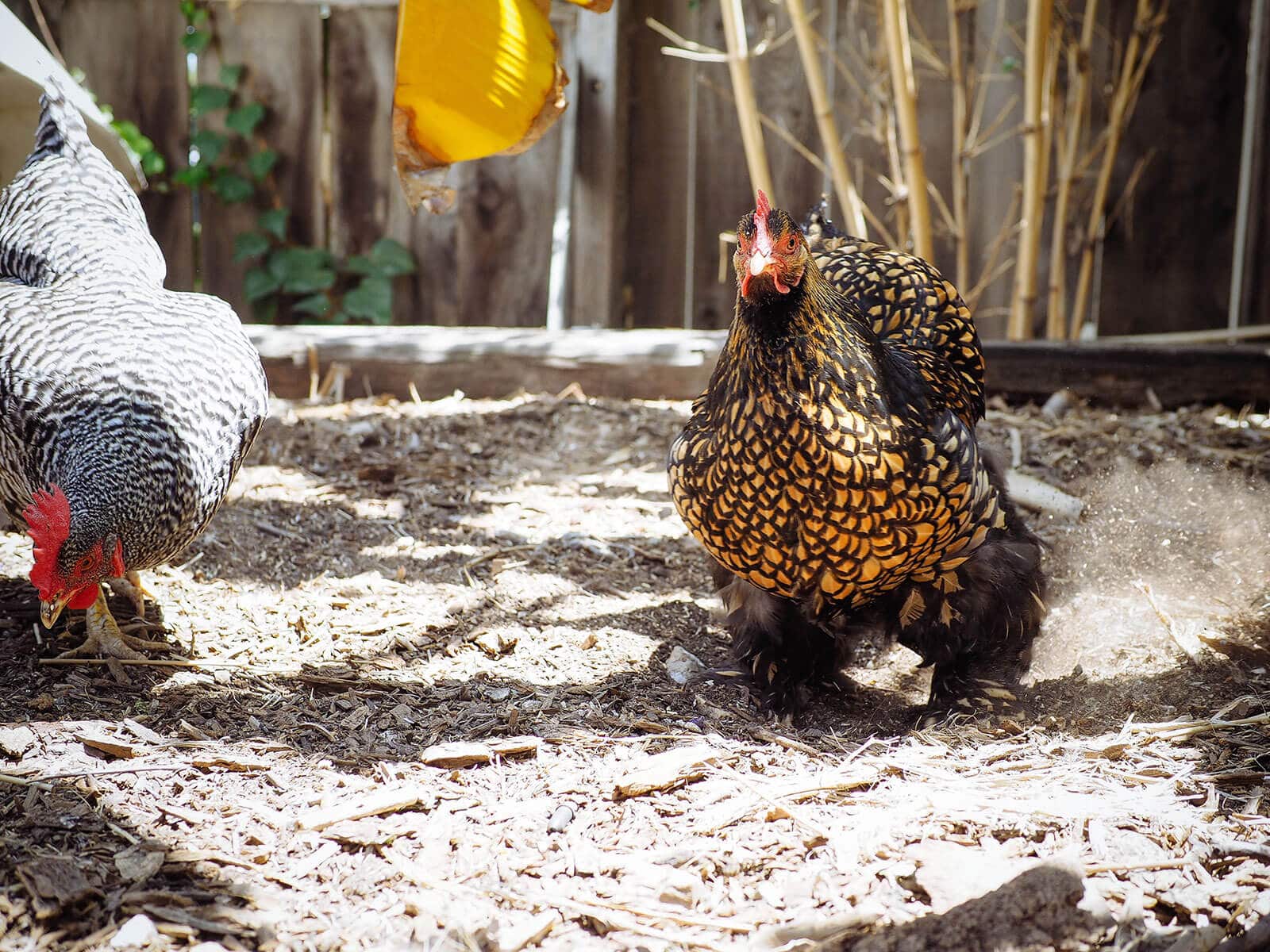
Since it takes some time for their hormone levels to get back in balance, ex-broodies may not lay for a couple of weeks after they’ve been broken. Just make sure they continue to eat, drink, and socialize, and watch for that first egg to pop out!
This post updated from an article that originally appeared on June 12, 2014.
View the Web Story on how to stop a broody hen.















